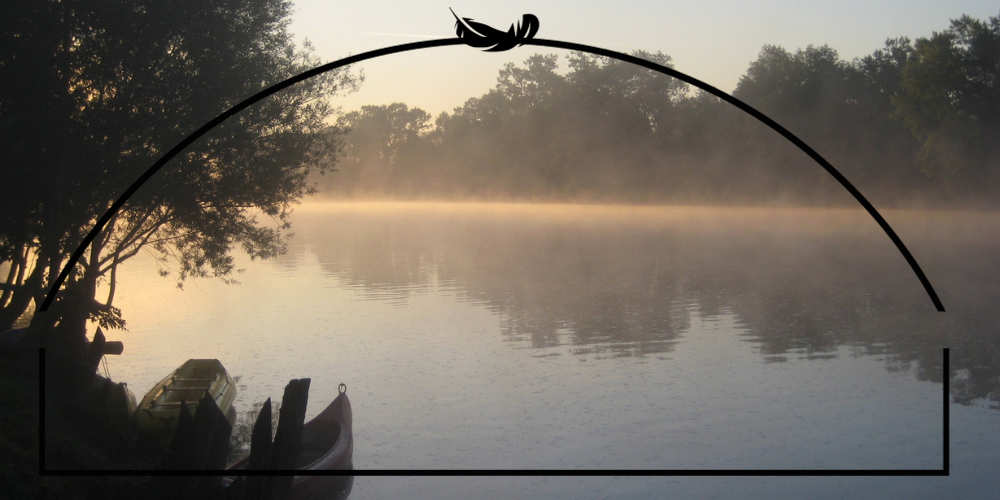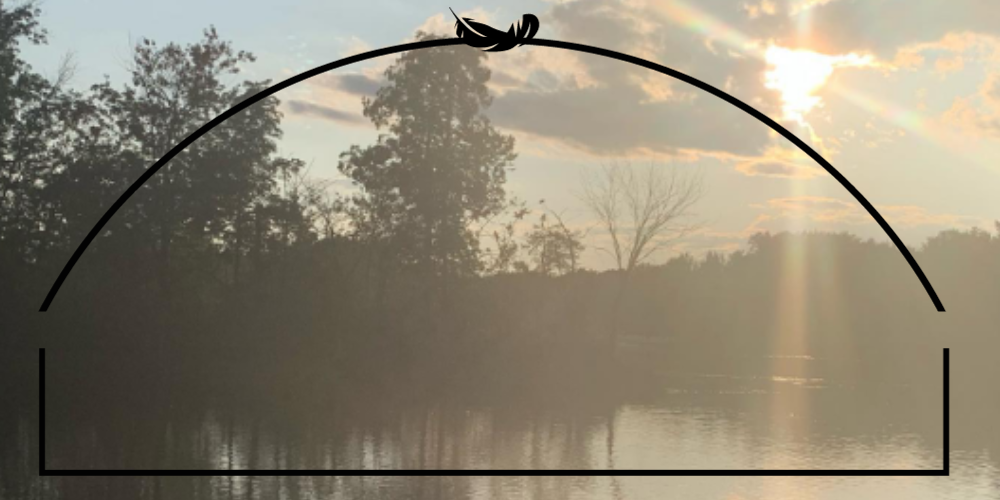This is probably part of an ongoing meditation on story, myth, and land based spirituality, as it is something I’m really reflecting upon lately.
We are 5 days before the summer solstice and on the verge of a thunder storm as I write. My house is humid and grey as the clouds pass in front of the sun; light breaking in through the dense overcast sky as the winds push the shadows across the lush greenery outdoors. My house is well insulated, with no air conditioning, so the dampness creeps in, despite everything being closed, as I wait for the rains to arrive. My first year in this region, 22 years ago now, I was surprised by the humidity, the thunderstorms, and the ways the summer heat creeps in here. I had anticipated the cold, but not the heat. It took many years for my body to acclimatize to different weather patterns than those I had always known.

I have no connections to this land other than the ones I intentionally foster. It has taken me a long time to find meaningful ways to make this land home, to hear the spirits of it, to become attuned to its voice.
The land here is marked by fire and ice, snow and heat, deep winter winds and humid summer storms. And the stories that bring this to life are the stories that honour that type of knowledge.
Let me give an example that might make more sense:
The Witte Wieven
The Witte Wieven*, a Dutch folk legend about the Wise Healing Women who dance in the Fog and Mist, feel right in this space – this field you see in the photos of this post. The morning fogs of autumn, the steam coming off the winter snow, and the warming mists of spring, have helped bring the story of the Witte Wieven to life; reconnect me to my ancestral narratives; and foster a connection to the land in ways I never expected.
As someone who loves stories, this reconnection to land through story has been a gift and has driven home some of the Indigenous Ways of Knowing that I have been learning through my work with Indigenous communities, but in non-appropriative ways that feel respectful.
Animistic Deities
I think that remembering that our language and stories carry the land in them is vital for this age. We have lost so much connection to the land, that even the simple reminder that the word Earth comes from the Goddess Eartha, the Sun – Sunna, and the Moon – the God Mani, can be a way to reconnect to place. We are literally walking on the Goddess, and looking up at the God and Goddess.
The old Gods are animistic and of the land. We have somehow, it often seems, made them too abstract and remote, losing sight that gods like Thunor (Thor) is the thunder and rain and lightning strike of energy – the hammer that strikes to create the spark of heat we need to survive and the rains our crops need to grow. When we remember to see Donar (also Thor), as such, we see why he was a god of the people. The people need him because he is the heat and waters that we need to survive, to craft, and to grow.
I believe that remembering the animistic roots of our deities helps us rebuild our connection to place. The gods aren’t abstract. They are alive and well, just as the world around us is.**
Stories Give Us Meaning
Stories are the way we remember them. Finding the right stories that sing to you and help attune you to the land – that’s magic.
The longer I spend contemplating the anxiety of settler identity and connection, the more I come to realize that the way forward, for me at least, is intimately connected to finding a way to use the wealth of my own stories, respectfully, in this land, in a complimentary relationship with the stories I am gifted, as I go along.
The land does not belong to us, only the stories we tell do.
And the stories are the keys we can use to help us unlock the land’s (if the land is willing) mysteries just enough that we can build new stories, together with the land. My greatest hope is that I will gift my son and community with enough meaningful stories about the land, that they too will feel the deep, reverent connection that I so cherish and that the land that they walk upon always knows their gratitude.
*Depending on the lore the Witte Wieven are also seen negatively in the lore. But I choose to embrace the identity of the healing ancestral women because it fits with my experience of them. This isn’t to say they can’t also be dangerous if disrespected.
**Ultimately speaking of course, given the current environmental crisis being one that the earth itself will survive and the various permutations of that information.

